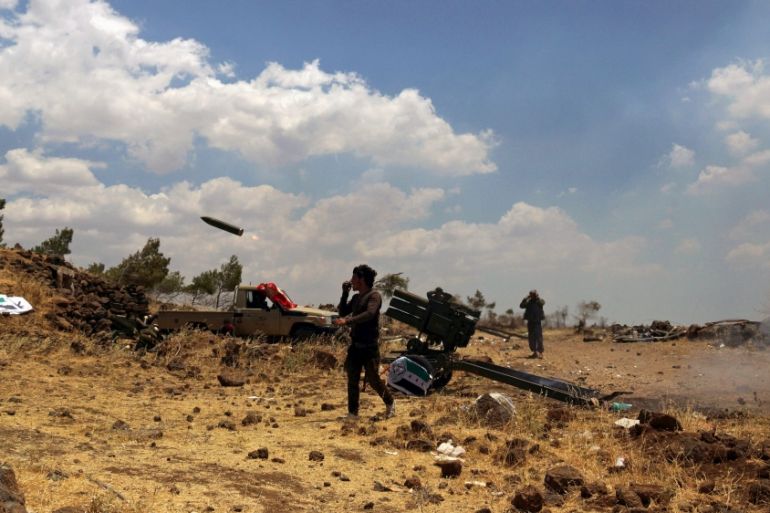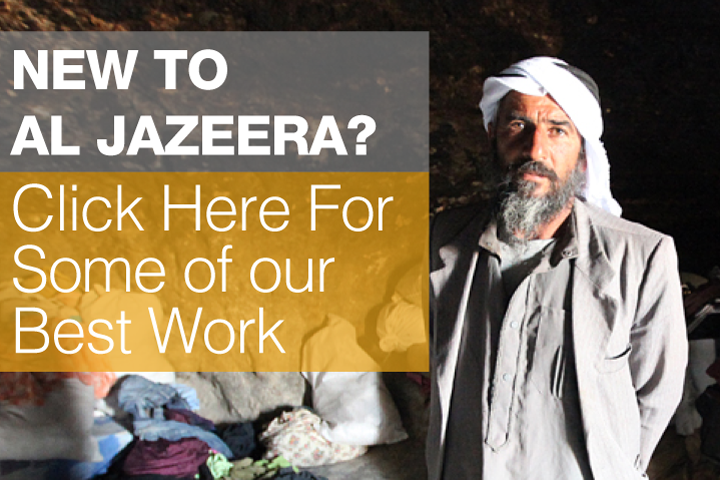Syria rebel leader killed in Golan car bombing
No group has taken credit for the car bombing, which killed the leader of Syria Revolutionaries Front and 17 others.

A car bombing targeting an influential Syrian rebel group has killed at least 18 people in Quneitra province of the country’s south, as opposition groups elsewhere in Syria accused the government of breaching a truce.
Late on Wednesday, the car bomb targeted the Syria Revolutionaries Front’s local finance office in al-Ashe, a village on the outskirts of southern Quneitra near the border with the Israeli-occupied Golan Heights.
|
|
| Syria fighting continues despite ceasefire |
Among those killed was the armed group’s leader Muhammad al-Qairi, also known as Abu Hamza al-Naimi, as well as three other leaders, local sources told Al Jazeera.
No group has claimed responsibility for the bombing.
“Unfortunately, civilians who were near by were among those killed,” said Abu Omar al-Jolani, a Quneitra-based media activist who was present at the time of the blast.
In addition to a “metre-deep hole in the street”, the explosion destroyed the SRF’s finance office and badly damaged several nearby residential buildings, he added.
READ MORE: Assad forces ‘build up’ troops in Syrian Golan
“It was a rough scene. An old man was sitting and crying as he watched people collect his dead brother’s body parts,” Jolani recalled. “I had gone there to film, but I turned off my camera and just started crying with him.”
Jolani’s video footage of the attack’s aftermath was published by Qasioun News, a local Syrian agency.
The SRF is part of the Southern Front, a broad alliance of rebel groups operating in several provinces in southern Syria.
Hamza Mustafa, a research assistant at the Arab Centre for Research and Policy Studies, said the Southern Front had in the past been targeted by both government forces and armed groups, including the al-Nusra Front and its allies.
“Some people are accusing the regime of this attack, but many analysts believe it was Nusra or al-Muthanna,” he told Al Jazeera, referring to an armed group believed to have ties with both the Nusra Front and the Islamic State of Iraq and the Levant (ISIL).
“I expect that al-Muthanna is behind this,” he said. “These groups have been accused of many assassinations in the Deraa and Quneitra provinces.”
Strategic region
The Syrian conflict began nearly five years ago as a largely unarmed uprising against the government of Syrian President Bashar al-Assad, but it morphed into a full-on civil war that has killed more than 260,000 people, according to the United Nations.
Quneitra is located in the roughly 30 percent of the Golan Heights that remained under Syrian control after Israel occupied the rest of the region during the 1967 Middle East war.
In January, the Syrian government and pro-Assad armed groups launched an offensive in the Syrian-controlled portion of the Golan.
Media activist Jolani, who is close to the Revolutionary Command Council in Quneitra and the Golan, another alliance of armed groups that coordinates with the SRF, said that the Assad government controls only around 20 percent of the province.
“The regime is still present in Khan Arnabah, al-Baath city and some villages,” he said. “The Syria Revolutionaries Front has become very popular here because it focuses its fight on the regime.”
Marwan Kabalan, a Syrian academic and associate political analyst at the Doha Institute, explained that SRF is an influential faction in southern Syria and enjoys the backing of Jordan, Saudi Arabia and the United Arab Emirates.
READ MORE: Golan Heights – New flashpoint in Syria war?
“We must not forget about the importance of Quneitra and the Golan,” Kabalan told Al Jazeera. “The regime lost a lot of territory over the last few years, but now there is a stalemate.

“The opposition cannot advance, while the regime is unable to take back the areas it lost,” he added.
“Assad does still hold some important areas in the northern Golan Heights. There are strong military divisions there serving as the regime’s defensive line for Damascus.”
Kabalan explained that Quneitra province remains a strategically and politically significant region in the Syrian conflict because of its close proximity to Israel and the Israeli-occupied portion of the Golan.
He said that Assad’s government, as well as its Iranian and Hezbollah allies, are “very keen on controlling this area in order to use it as a bargaining chip in any future settlement for the situation in Syria.
“The regime feels that [controlling the Golan] gives back legitimacy that it lost throughout this revolution. Whoever controls Golan Heights has a say in the Arab-Israeli conflict and has leverage on Israel.”
Wednesday’s bombing came amid complaints that the government had violated the cessation of hostilities in areas across northern Syria, namely in the Latakia province near Turkey’s border.
Follow Patrick Strickland on Twitter: @P_Strickland_